铋/介质:5%硝酸,标准溶液,溶剂:水, 100mg/L
产品编号:西域质检-TM60100| CAS NO:7440-69-9| 分子式:Bi| 分子量:208.98000
本网站销售的所有产品仅用于工业应用或者科学研究等非医疗目的,不可用于人类或动物的临床诊断或者治疗,非药用,非食用,
铋/介质:5%硝酸
本标准物质主要用于测量仪器校准,分析方法确认与评价,测量过程质量控制,也可用于量值溯源或作为标准储备溶液,通过逐级稀释配制成各种工作用标准溶液。 本标准物质适用于电感耦合等离子体发射光谱法(ICP-OES),电感耦合等离子体质谱法(ICP-MS),原子荧光光谱法(AFS),原子吸收光谱法(AAS),分光光度法等方法分析测试使用
本标准物质以纯度经准确定值的高纯金属铋,优级硝酸和符合国家一级水标准的纯水为原料,在(20±3)℃的条件下采用重量-容量法准确配制而成。
本标准物质以配制值作为标准值,采用电感耦合等离子体发射光谱法(ICP-OES)进行量值核对。通过使用满足计量学特性要求的制备方法,测量方法和计量器具,保证标准物质的量值溯源性。
标准值(Bi):100mg/L,相对扩展不确定度(k=2):2%,基体(V/V):5%硝酸
标准值的不确定度综合考虑了原料纯度定值结果,制备过程,量值核验以及均匀性,稳定性等引入的不确定度分量。
依据JJF1343-2012[标准物质定值的通用原则及统计学原理],对分装后的样品进行随机抽样,对溶液浓度进行均匀性检验,稳定性考察。结果表明,本标准物质均匀性,稳定性良好。
该标准物质自定值日期起,有效期36个月,研制单位将继续跟踪监测该标准物质的稳定性,有效期内如发现量值变化,将及时通知用户。
1.包装: 本标准物质采用高密度聚乙烯(HDPE)瓶分装,50mL/瓶,移取或稀释时请以移液管量取为准。
2.贮存:运输时应避免挤压,碰撞;常温(20±5)℃,置于阴凉处贮存。
3.使用:使用前应恒温至(20±3)℃,并充分摇匀。温度变化会导致溶液体积发生变化,可根据GB/T601附录A进行体积校正。本标准物质打开后应尽快使用,避免玷污。
相关文档
化学品安全说明书(MSDS)
下载MSDS质检证书(COA)
相关产品
-
CAS号:7440-69-9

铋粉
¥4,617.00
-
CAS号:7440-69-9

铋/介质:5%硝酸
¥60.00
-
CAS号:7440-69-9

铋/介质:5%硝酸
¥105.00
-
CAS号:7440-69-9

铋/介质:5%硝酸
¥210.00
-
CAS号:7440-69-9

铋/介质:5%硝酸
¥90.00
-
CAS号:7440-69-9

铋/介质:5%硝酸
¥75.00
-
CAS号:7440-69-9

铋粉, 99.99% met...
¥43.00
-
CAS号:7440-69-9

铋粉, 99.99% met...
¥43.00
-
CAS号:7440-69-9

铋粉, 99.9% metal...
¥110.00
-
CAS号:7440-69-9

铋粉, 325目, 99.5%...
¥60.00
-
CAS号:7440-69-9

铋粉, 99.9% metal...
¥101.00
-
CAS号:7440-69-9

高纯铋, 99.9% meta...
¥259.00
| 符号 |
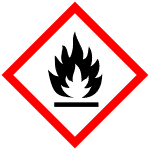
GHS02 |
|---|---|
| 信号词 | Danger |
| 危害声明 | H228 |
| 警示性声明 | P210-P370 + P378 |
| 个人防护装备 | Eyeshields;Gloves;type N95 (US);type P1 (EN143) respirator filter |
| 危害码 (欧洲) | F:Flammable |
| 风险声明 (欧洲) | R11 |
| 安全声明 (欧洲) | S16-S45-S36/37/39-S26 |
| 危险品运输编码 | UN 3264 8/PG 3 |
| WGK德国 | 1 |
| RTECS号 | EB2600000 |
| 包装等级 | III |
| 危险类别 | 8 |
| 海关编码 | 8106009090 |
|
SECTION 1: Identification of the substance/mixture and of the company/undertaking Product identifiers Product name: Bismuth REACH No.: A registration number is not available for this substance as the substance or its uses are exempted from registration, the annual tonnage does not require a registration or the registration is envisaged for a later registration deadline.
CAS-No.: 7440-69-9 Relevant identified uses of the substance or mixture and uses advised against Identified uses: Laboratory chemicals, Manufacture of substances SECTION 2: Hazards identification Classification of the substance or mixture Not a hazardous substance or mixture according to Regulation (EC) No. 1272/2008. This substance is not classified as dangerous according to Directive 67/548/EEC. Label elements The product does not need to be labelled in accordance with EC directives or respective national laws. Other hazards - none SECTION 3: Composition/information on ingredients Substances Formula: Bi Molecular Weight: 208,98 g/mol CAS-No.: 7440-69-9 EC-No.: 231-177-4 No components need to be disclosed according to the applicable regulations. SECTION 4: First aid measures Description of first aid measures If inhaled If breathed in, move person into fresh air. If not breathing, give artificial respiration. In case of skin contact Wash off with soap and plenty of water. In case of eye contact Flush eyes with water as a precaution. If swallowed Never give anything by mouth to an unconscious person. Rinse mouth with water. Most important symptoms and effects, both acute and delayed The most important known symptoms and effects are described in the labelling (see section 2.2) and/or in section 11 Indication of any immediate medical attention and special treatment needed no data available SECTION 5: Firefighting measures Extinguishing media Suitable extinguishing media Use water spray, alcohol-resistant foam, dry chemical or carbon dioxide. Special hazards arising from the substance or mixture Bismuth oxides Advice for firefighters Wear self contained breathing apparatus for fire fighting if necessary. Further information no data available SECTION 6: Accidental release measures Personal precautions, protective equipment and emergency procedures Avoid dust formation. Avoid breathing vapours, mist or gas. For personal protection see section 8. Environmental precautions No special environmental precautions required. Methods and materials for containment and cleaning up Sweep up and shovel. Keep in suitable, closed containers for disposal. Reference to other sections For disposal see section 13. SECTION 7: Handling and storage Precautions for safe handling Provide appropriate exhaust ventilation at places where dust is formed. For precautions see section 2.2. Conditions for safe storage, including any incompatibilities Store in cool place. Keep container tightly closed in a dry and well-ventilated place. Specific end use(s) Apart from the uses mentioned in section 1.2 no other specific uses are stipulated SECTION 8: Exposure controls/personal protection Control parameters Components with workplace control parameters Exposure controls Appropriate engineering controls General industrial hygiene practice. Personal protective equipment Eye/face protection Use equipment for eye protection tested and approved under appropriate government standards such as NIOSH (US) or EN 166(EU). Skin protection Handle with gloves. Gloves must be inspected prior to use. Use proper glove removal technique (without touching glove's outer surface) to avoid skin contact with this product. Dispose of contaminated gloves after use in accordance with applicable laws and good laboratory practices. Wash and dry hands. The selected protective gloves have to satisfy the specifications of EU Directive 89/686/EEC and the standard EN 374 derived from it. Full contact Material: Nitrile rubber Minimum layer thickness: 0,11 mm Break through time: 480 min Material tested:Dermatril® (KCL 740 / Z677272, Size M) Splash contact Material: Nitrile rubber Minimum layer thickness: 0,11 mm Break through time: 480 min Material tested:Dermatril® (KCL 740 / Z677272, Size M) data source: KCL GmbH, D-36124 Eichenzell, phone +49 (0)6659 87300, test method: EN374 If used in solution, or mixed with other substances, and under conditions which differ from EN 374, contact the supplier of the CE approved gloves. This recommendation is advisory only and must be evaluated by an industrial hygienist and safety officer familiar with the specific situation of anticipated use by our customers. It should not be construed as offering an approval for any specific use scenario. Body Protection Choose body protection in relation to its type, to the concentration and amount of dangerous substances, and to the specific work-place., The type of protective equipment must be selected according to the concentration and amount of the dangerous substance at the specific workplace. Respiratory protection Respiratory protection is not required. Where protection from nuisance levels of dusts are desired, use type N95 (US) or type P1 (EN 143) dust masks. Use respirators and components tested and approved under appropriate government standards such as NIOSH (US) or CEN (EU). Control of environmental exposure No special environmental precautions required. SECTION 9: Physical and chemical properties Information on basic physical and chemical properties a) AppearanceForm: granular Colour: light grey b) Odourodourless c) Odour Thresholdno data available d) pHno data available e) Melting point/freezingMelting point/range: 271 °C pointMelting point/range: 272 °C f) Initial boiling point and 1.560 °C boiling range g) Flash pointno data available h) Evapouration rateno data available i) Flammability (solid, gas) no data available j) Upper/lowerno data available flammability or explosive limits k) Vapour pressure< 0,1 hPa at 20 °C l) Vapour densityno data available m) Relative density9,8 g/mL at 25 °C n) Water solubilityinsoluble o) Partition coefficient: n- no data available octanol/water p) Auto-ignitionno data available temperature q) Decompositionno data available temperature r) Viscosityno data available s) Explosive propertiesno data available t) Oxidizing propertiesno data available Other safety information no data available SECTION 10: Stability and reactivity Reactivity no data available Chemical stability Stable under recommended storage conditions. Possibility of hazardous reactions no data available Conditions to avoid no data available Incompatible materials Oxidizing agents, Halogens, acids Hazardous decomposition products Other decomposition products - no data available In the event of fire: see section 5 SECTION 11: Toxicological information Information on toxicological effects Acute toxicity LD50 Oral - rat - male and female - 2.000 mg/kg (OECD Test Guideline 401) Skin corrosion/irritation no data available Serious eye damage/eye irritation no data available Respiratory or skin sensitisation no data available Germ cell mutagenicity no data available Carcinogenicity IARC:No component of this product present at levels greater than or equal to 0.1% is identified as probable, possible or confirmed human carcinogen by IARC. Reproductive toxicity no data available Specific target organ toxicity - single exposure no data available Specific target organ toxicity - repeated exposure no data available Aspiration hazard no data available Additional Information Repeated dose toxicity - rat - male and female - Gavage - No observed adverse effect level - 1.000 mg/kg RTECS: EB2600000 Kidney disorders, Liver disorders, Dermatitis SECTION 12: Ecological information Toxicity Toxicity to daphnia and static test EC50 - Daphnia magna (Water flea) - > 100 mg/l - 48 h other aquatic(OECD Test Guideline 202) invertebrates Persistence and degradability no data available Bioaccumulative potential no data available Mobility in soil no data available Results of PBT and vPvB assessment PBT/vPvB assessment not available as chemical safety assessment not required/not conducted Other adverse effects no data available SECTION 13: Disposal considerations Waste treatment methods Product Offer surplus and non-recyclable solutions to a licensed disposal company. Contaminated packaging Dispose of as unused product. SECTION 14: Transport information UN number ADR/RID: -IMDG: -IATA: - UN proper shipping name ADR/RID: Not dangerous goods IMDG: Not dangerous goods IATA:Not dangerous goods Transport hazard class(es) ADR/RID: -IMDG: -IATA: - Packaging group ADR/RID: -IMDG: -IATA: - Environmental hazards ADR/RID: noIMDG Marine pollutant: noIATA: no Special precautions for user no data available SECTION 15 - REGULATORY INFORMATION N/A SECTION 16 - ADDITIONAL INFORMATION N/A |
| 上游产品 10 | |
|---|---|
| 下游产品 10 | |


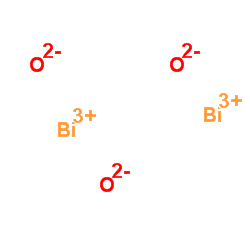
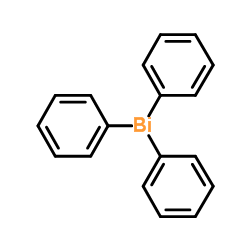
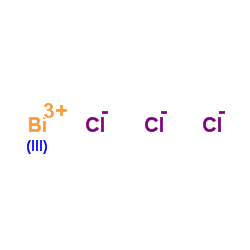



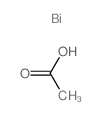

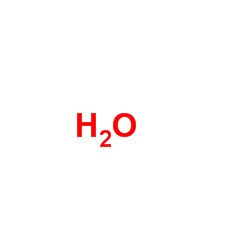

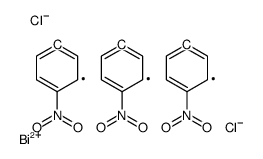
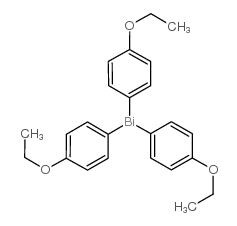


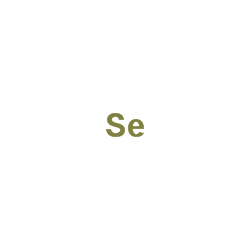






 浙公网安备 33010802013016号
浙公网安备 33010802013016号